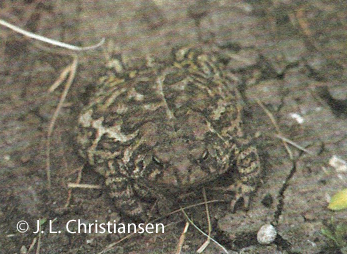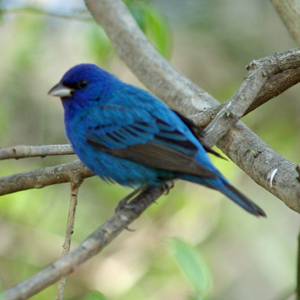Bufonidae
Bufo cognatus, Great Plains Toad
Large, dark olive spots on a light gray or light olive background characterize this species. The blotches are large enough to include many warts. The cranial ridges are in contact with the parotoid glands but unlike other Iowa toads they converge and usually touch on the snout. The belly is plain white. Great plains toads get quite large with specimens commonly 3 1/2 inches (89 mm)long. The cranial ridges touching, or nearly touching on the snout and the large, light-edged, olive blotches easily separate this toad from all other Iowa amphibians. Bufo cognatus has no recognized subspecies.
The call of great plains toads is a long, loud, metallic trill. It is less melodious than the trill of American toads and is unlike the cry of Woodhouse 's toad. The great plains toad, like Woodhouse's toad, is late-breeding, calling from May through early July. It too is primarily a toad of the loess hills of western Iowa but occurs farther northward, well into Minnesota. On a larger scale, this toad has a tremendous range, extending northward into Canada and southward to central Mexico. Great plains toads are abundant in western Iowa where they coexist with Woodhouse's toads. Where the two species exist together, they seem to exclude American toads, but this exclusion may be breaking down as the loess hills become more forested. Recent sightings have included more Bufo americanus and more of what appear to be Bufo americanus x woodhousei hybrids than were noted in the past.

.jpg)
